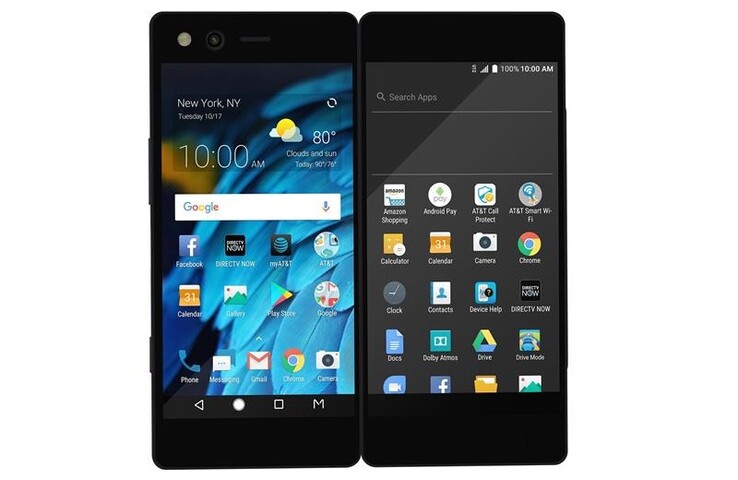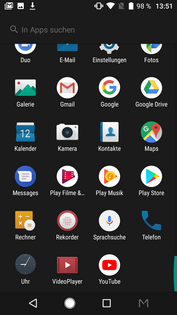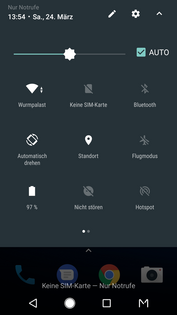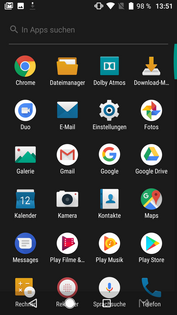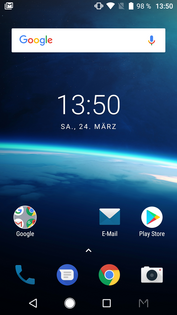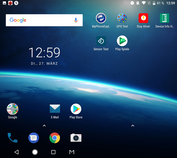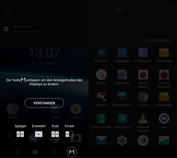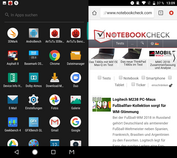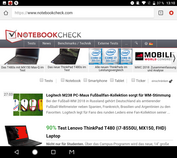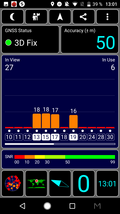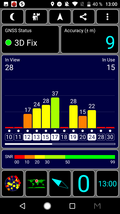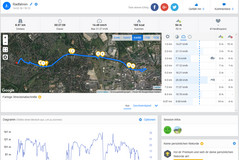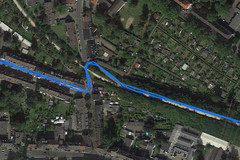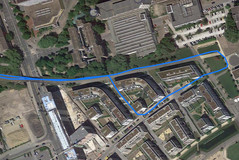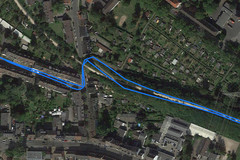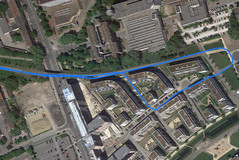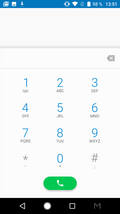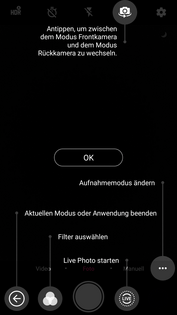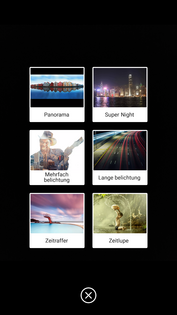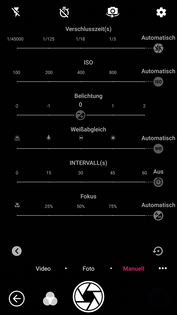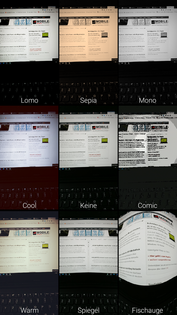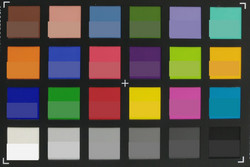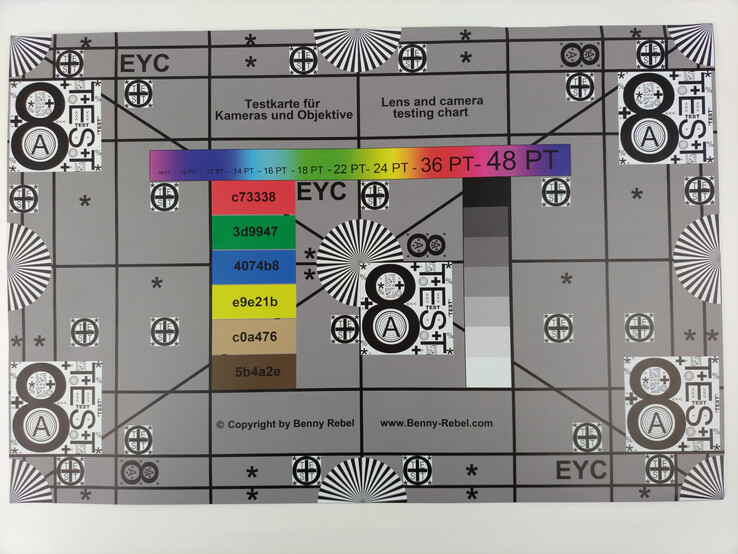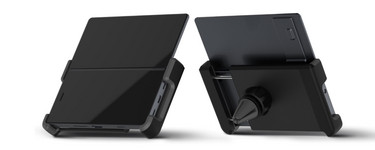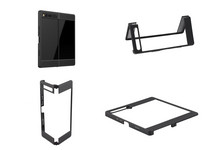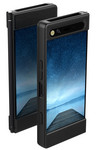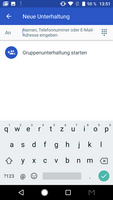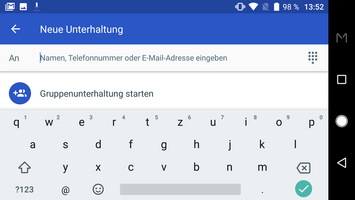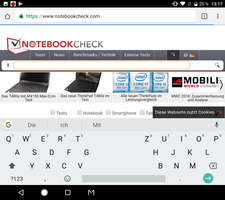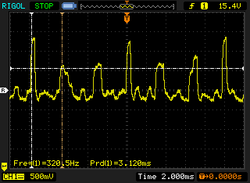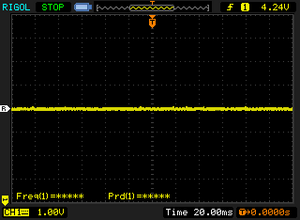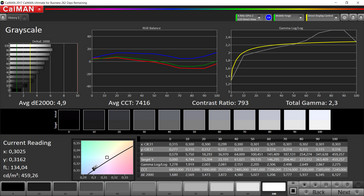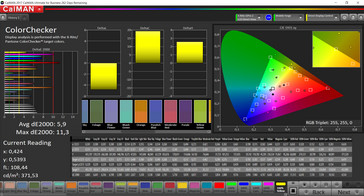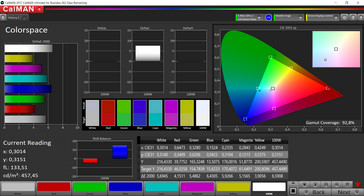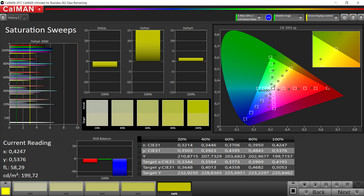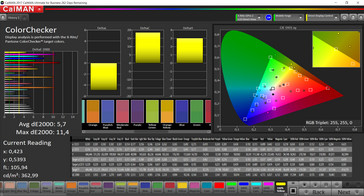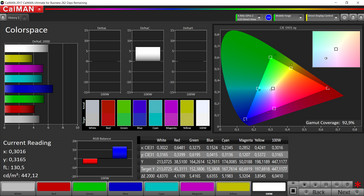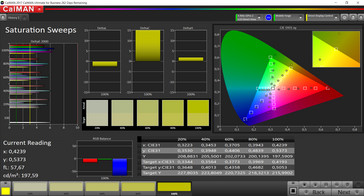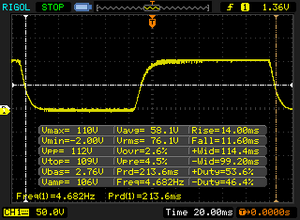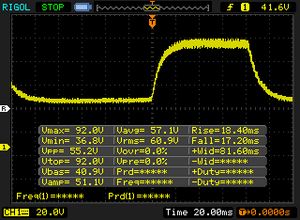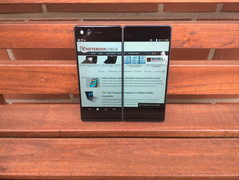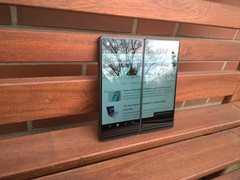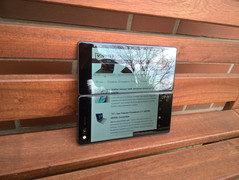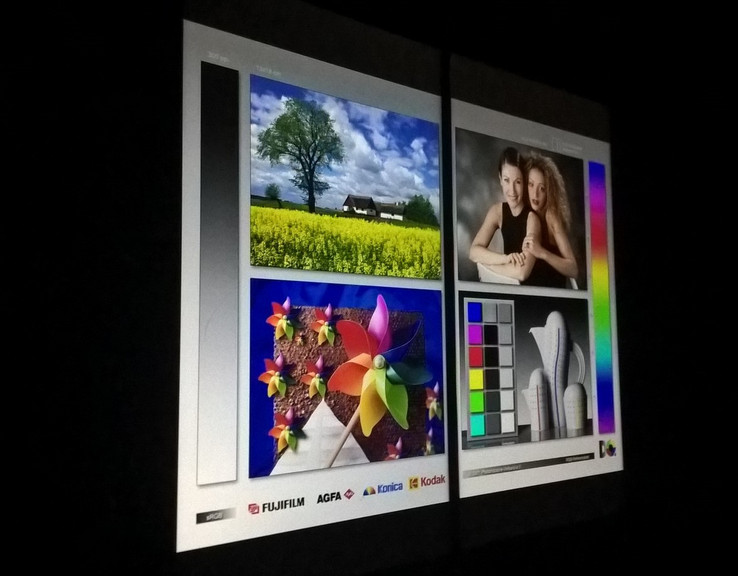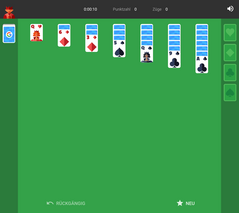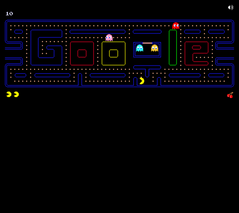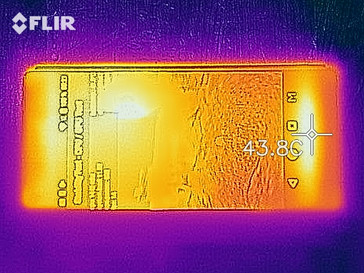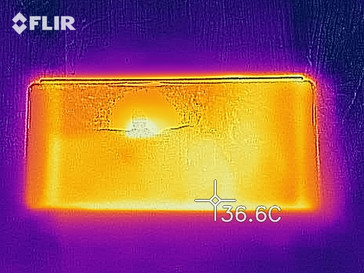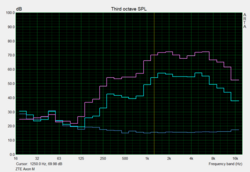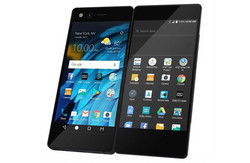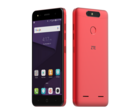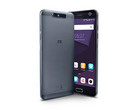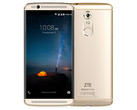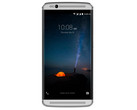ZTE Axon M Smartphone Review
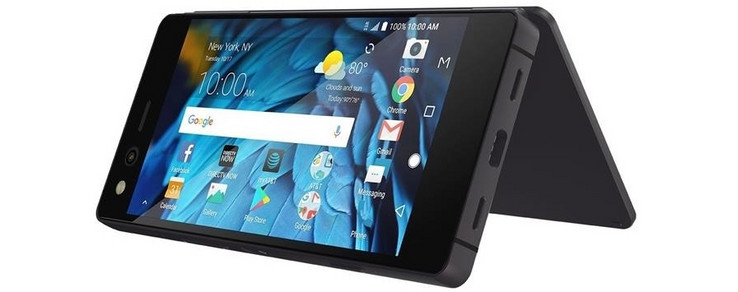
If we are honest, smartphones hardly differ from each other externally: a large display, buttons left and right, and connections on the top and bottom. That is it. So it is refreshing if a manufacturer finally implements a concept announced a long time ago. Even though ZTE did not introduce a "real" foldable smartphone in the sense of a bendable display, its concept with the two screens is still special. Of course, there were other phones with several screens, such as the Yota Phone with e-Ink display, but in this form, there has not been anything like this available on the European market.
Until now, ZTE has always shown itself as a solid manufacturer in our tests with classical smartphones, which promised good features on paper, but at the end of the test came in slightly below our expectations, as for example the ZTE Blade V8. Since the dual screen of the Axon M is a unique feature, this would of course be the decisive factor for interested buyers. Yet, we still want to know what performance we can expect from the built-in Qualcomm Snapdragon 821 MSM8996 Pro SoC with an Adreno 530 graphics unit, and how well the 20-MP camera works in the front and back.
In our test, we compare the Axon M with similarly equipped smartphones to reach a comparative evaluation leaving the double screen aside. The competitors in this test include the HTC U Ultra and the LG G6, since these two devices are equipped with the same SoC. However, to reflect its price point, the ZTE Axon also has to compete against more expensive smartphones, such as the Google Pixel 2 and Huawei's Mate 10 Pro.
Case - ZTE chooses metal and glass
When folded up, the display with the camera is in front, and the other display is in the back. Initially, this feels a little strange, since the display in the back really feels like a display and not like a glass surface. However, after a brief period of getting used to it, this is not a problem anymore. All the buttons are on the left side since the hinge stretches across the whole length of the right side of the smartphone. Surprisingly, this does not interfere when holding the phone in the hand, but ensures a better grip instead.
A metal frame surrounds the edges of the display, whereas the inside (or the back when the device is opened) is made of plastic. When the user opens the device, the display area expands almost to a square. The display from the back, which is on the right side, is thinner than the main screen. The hinge then provides a spot to anchor the fingers in the center of the back of the device. This enables holding an almost 15 cm (5.9 in) wide and high device with only one hand, without having to reach across the display edge.
The weight of more than 200 grams (0.44 lb) is definitely noticeable, which also gives it some subjective feel of value. ZTE did not plan on being able to change the battery in the Axon M.
Features - The Axon M is in the mid high-end
Our test unit is equipped with Qualcomm's Snapdragon 821 MSM8996 Pro SoC and an Adreno 530 graphics unit. At the end of 2016, this combination belonged to the high-end SoCs and can still be found in the current high-end smartphones. 4 GB of RAM and 64 GB of internal eMMC flash storage ensure sufficient performance. The internal storage can be expanded by up to 256 GB via SD card, which can also be configured as internal storage. However, we were unable to move already installed apps to the storage card. With the corresponding adapter, you can also run USB hard drives with the Axon M. There is a headphone jack on the top of the Android smartphone to connect a headset.
Software - Standard Android with excellent dual-screen support
Android version 7.1.2 is installed on the ZTE mobile phone in the delivery state. The manufacturer did not add special icons or visual adjustments of the user interface, concentrating instead on dual-screen support. Next to the standard icons on the bottom edge of the screen, there is also a stylized "M." If the second screen is unfolded, you can select the display mode using this icon, where you can expand the image onto the second screen, duplicate it, or move it so that you can use an additional app on the other side. This worked very well in our test. The switching of the displays worked quickly and smoothly.
Communication and GPS - Mobile net is great but WLAN not so
For communication with the external world, the Axon M has WLAN, Bluetooth, and LTE. While the ZTE Axon 7 achieved very good results in our test measuring the WLAN more than a year ago, the Axon M is unable to repeat this achievement. With a data reception rate below 60 MBit/s, the 800-Euro (~$986) device has to be content with last place in our comparison list. Our test unit did not recognize the 5-GHz WLAN, but only communicated in the slower 2.4-GHz band. However, since we had only a pre-production model, the production version might still achieve better data rates. In terms of the mobile communication, the dual-screen smartphone can use various GSM, UMTS, and LTE bands, although the LTE band 20, which is still in widespread use in Europe, is not included. Interested buyers who live far from larger cities should consider this factor.
| Networking | |
| iperf3 transmit AX12 | |
| Huawei Mate 10 | |
| HTC U Ultra | |
| Google Pixel 2 | |
| LG G6 | |
| ZTE Axon M | |
| iperf3 receive AX12 | |
| LG G6 | |
| Huawei Mate 10 | |
| Google Pixel 2 | |
| HTC U Ultra | |
| ZTE Axon M | |
The GPS module of the Axon M is comparatively inaccurate in our test. Over the whole test route, the smartphone shows about 20 meters (~66 feet) more than our Garmin 500 comparison device. By itself, this would not be much of a problem, but the detail view shows that the GPS in the Axon M remains consistently besides the test route in curves and also longer straight stretches.
Indoors, determining the location is practically impossible. GPS contact to the satellite could be maintained only when we reentered the room from the outside again. However, the accuracy was only 50 meters (~164 feet).
Telephone Functions and Call Quality - ZTE with good sound
For the telephone function, ZTE chose the standard Android Telephone app, which allows you to select contacts and make calls as usual. The voice quality of the phone calls is good, and both conversation partners can easily communicate with each other. The hands-free operation worked excellently with the built-in speaker. The sound quality is very good and allows hands-free calling even in loud surroundings.
We did not find any indications of VoLTE or VoWLAN support in the settings menu of the Axon M.
Cameras - Smartphone with 20 MP front camera
In contrast to many other current smartphones, the ZTE Axon M makes do with only a single main camera. Because of the second display, the front camera becomes unnecessary, since the users can just look at the front or back display of the phone, depending on whether they want to take a selfie or a picture of the surroundings. In order to start the camera, besides selecting the icon on the screen, you can also double press the additional key on the left side of the Axon. This will automatically switch the phone to using the display on the back.
The 20-MP sensor can take images at a resolution of up to 5168x3876 pixels in the 4:3 format and 5120x2880 pixels in the 16:9 format. There are many adjustment settings available for smartphone photographers. Beginning with several filters and continuing with HDR, various image modes, shutter speed, and white balance, many settings can be adjusted individually.
However, you can also take decent pictures with the camera of the Axon M without using the many adjustment options. When doing that, we noticed that large contrasts in the lighting result in image areas that are too bright or too dark. In the detail, edges are blurry and color changes in the background are displayed slightly muddy even in good lighting conditions. In bad lighting conditions, you need a stable hand to avoid a washed out picture. Even then, the object edges are frayed and details can only be guessed.
The camera of the Axon M tends to reproduce colors rather too dark. In particular bright and dark areas are reproduced darker than they really are.
Under controlled light conditions, the 20-MP sensor of the ZTE smartphone is able to reproduce our test image sharply. However, outside the image center there is some slight blurriness that becomes stronger towards the edges. In the detail view, these areas appear slightly frayed.
Accessories and Warranty - Dual screen in the car and on the road
ZTE offers accessories that are particularly designed for buyers of the Axon M. This includes a bumper case, which is supposed to protect the corners of the device and a car mount, which allows using the phone with the display unfolded. In Germany, the manufacturer offers 24 months of warranty for all mobile devices. ZTE customers can have their devices analyzed on an in-house repair portal and directly send a repair order.
Please see our Guarantees, Return Policies and Warranties FAQ for country-specific information.
Input Devices and Navigation - Split-screen keyboard in the Axon M
Using the virtual keyboard of the Axon M, you can input texts quickly and accurately. The reaction of the keyboard is very direct and we were always able to press the right key, whether in portrait or landscape format. The keyboard is a small highlight when the image is stretched over both displays. The keyboard is then split and visually reminiscent of ergonomically formed keyboards. In this way, you can also input longer texts easily. However, the dual screen turns out to be a disadvantage when an app with a text field is only on one of the two screens. Of course, you can then input text only on that side and only with one hand.
Multi-touch input is also possible with both screens. For example, you can move apps to the left or right screen using a three-finger gesture. The fingerprint sensor is integrated into the power button on the left side of the device. It reacts very quickly and unlocks the phone almost instantly, if you directly hit the right position with your finger.
Display - Dual is better
Both displays of the Axon M smartphone have a 5.2-inch diagonal and display the image contents with a resolution of 1920x1080 pixels. If you unfold the phone, the available display area is doubled, resulting in an almost square screen. Depending on your alignment, there is always a horizontal or vertical stripe in the image, resulting from the edges where the displays meet.
Our measurements led us to believe that these are identical IPS panels since their results are so similar. We noticed that the brightness distribution of the display on the back turned out slightly more uneven. While PWM is not used for brightness regulation on the main screen, avoiding flickering strenuous to the eyes, the second screen does use PWM. Our measurements determined that the second display flickers at a frequency of 320 MHz in 44% brightness. Overall, the displays could have been brighter. At just 450 cd/m², the brightness might not be sufficient anymore on sunny days.
| |||||||||||||||||||||||||
Brightness Distribution: 91 %
Center on Battery: 455 cd/m²
Contrast: 784:1 (Black: 0.58 cd/m²)
ΔE ColorChecker Calman: 5.9 | ∀{0.5-29.43 Ø4.77}
ΔE Greyscale Calman: 4.9 | ∀{0.09-98 Ø5}
Gamma: 2.3
CCT: 7416 K
| |||||||||||||||||||||||||
Brightness Distribution: 89 %
Center on Battery: 448 cd/m²
Contrast: 759:1 (Black: 0.59 cd/m²)
ΔE ColorChecker Calman: 5.7 | ∀{0.5-29.43 Ø4.77}
ΔE Greyscale Calman: 4.4 | ∀{0.09-98 Ø5}
Gamma: 2.28
CCT: 7346 K
| ZTE Axon M IPS, 1920x1080, 5.2" | HTC U Ultra SLCD 5, 2560x1440, 5.7" | LG G6 IPS LCD, 2880x1440, 5.7" | Google Pixel 2 AMOLED, 1920x1080, 5" | Huawei Mate 10 IPS, 2560x1440, 5.9" | |
|---|---|---|---|---|---|
| Screen | 22% | 53% | 31% | 70% | |
| Brightness middle (cd/m²) | 448 | 470 5% | 646 44% | 396 -12% | 704 57% |
| Brightness (cd/m²) | 444 | 445 0% | 611 38% | 404 -9% | 692 56% |
| Brightness Distribution (%) | 89 | 88 -1% | 89 0% | 91 2% | 94 6% |
| Black Level * (cd/m²) | 0.59 | 0.22 63% | 0.23 61% | 0.28 53% | |
| Contrast (:1) | 759 | 2136 181% | 2809 270% | 2514 231% | |
| Colorchecker dE 2000 * | 5.7 | 5.5 4% | 4.5 21% | 1.7 70% | 2.4 58% |
| Colorchecker dE 2000 max. * | 11.4 | 11.9 -4% | 8.3 27% | 4 65% | 4.2 63% |
| Greyscale dE 2000 * | 4.4 | 7.6 -73% | 6 -36% | 1.3 70% | 2.8 36% |
| Gamma | 2.28 96% | 2.2 100% | 2.27 97% | 2.3 96% | 2.34 94% |
| CCT | 7346 88% | 7454 87% | 7996 81% | 6483 100% | 6423 101% |
| Color Space (Percent of AdobeRGB 1998) (%) | 67.74 | ||||
| Color Space (Percent of sRGB) (%) | 99.05 |
* ... smaller is better
Screen Flickering / PWM (Pulse-Width Modulation)
| Screen flickering / PWM not detected | |||
In comparison: 53 % of all tested devices do not use PWM to dim the display. If PWM was detected, an average of 8081 (minimum: 5 - maximum: 343500) Hz was measured. | |||
If you compare the separate displays with our comparison devices, the competition is at least 20% better. In particular, the black value and contrast, but also the measured color deviation leave something to be desired. The maximum brightness of both displays is sufficient to read the screen outdoors.
Display Response Times
| ↔ Response Time Black to White | ||
|---|---|---|
| 25.6 ms ... rise ↗ and fall ↘ combined | ↗ 14.6 ms rise | |
| ↘ 11 ms fall | ||
| The screen shows relatively slow response rates in our tests and may be too slow for gamers. In comparison, all tested devices range from 0.1 (minimum) to 240 (maximum) ms. » 60 % of all devices are better. This means that the measured response time is worse than the average of all tested devices (20.2 ms). | ||
| ↔ Response Time 50% Grey to 80% Grey | ||
| 35.6 ms ... rise ↗ and fall ↘ combined | ↗ 18.4 ms rise | |
| ↘ 17.2 ms fall | ||
| The screen shows slow response rates in our tests and will be unsatisfactory for gamers. In comparison, all tested devices range from 0.165 (minimum) to 636 (maximum) ms. » 49 % of all devices are better. This means that the measured response time is worse than the average of all tested devices (31.6 ms). | ||
Performance - The Axon M performance is average
The ZTE Axon M is run by a Snapdragon 821 MSM8996 Pro SoC with four cores, which are separated into a power-saving and a performance cluster. An integrated Adreno 530 graphics unit is responsible for the display contents. Both of those hardware components were considered high-end equipment in 2016 and are still used in high-end smartphones today. With 4 GB of LPDDR4-RAM and 64 GB of internal flash storage, there is sufficient performance also for more demanding applications.
The dual-screen smartphone achieves good results in our benchmarks. It is able to fulfill the expectations on the built-in hardware across the board. In the "IceStorm" and "SlingShot" 3DMark benchmarks, the Axon M was also able to maintain its results in the dual-screen mode. However, in addition to the performance, the price also plays a role in our evaluation, and at about 800 Euros (~$986; available for $725 in the US), we are already moving into the range of a Samsung Galaxy S9 Plus which offers up to 50% more performance at a similar price.
| AnTuTu v6 - Total Score (sort by value) | |
| ZTE Axon M | |
| HTC U Ultra | |
| LG G6 | |
| Google Pixel 2 | |
| Huawei Mate 10 | |
| Samsung Galaxy S9 Plus | |
| Average Qualcomm Snapdragon 821 MSM8996 Pro (138072 - 159866, n=10) | |
| PCMark for Android | |
| Work performance score (sort by value) | |
| ZTE Axon M | |
| HTC U Ultra | |
| LG G6 | |
| Google Pixel 2 | |
| Huawei Mate 10 | |
| Samsung Galaxy S9 Plus | |
| Average Qualcomm Snapdragon 821 MSM8996 Pro (4739 - 7659, n=10) | |
| Work 2.0 performance score (sort by value) | |
| ZTE Axon M | |
| HTC U Ultra | |
| LG G6 | |
| Google Pixel 2 | |
| Huawei Mate 10 | |
| Samsung Galaxy S9 Plus | |
| Average Qualcomm Snapdragon 821 MSM8996 Pro (5152 - 6461, n=5) | |
| Lightmark - 1920x1080 1080p (sort by value) | |
| LG G6 | |
| Google Pixel 2 | |
| Samsung Galaxy S9 Plus | |
| Average Qualcomm Snapdragon 821 MSM8996 Pro (n=1) | |
| Basemark X 1.1 | |
| Medium Quality (sort by value) | |
| LG G6 | |
| Average Qualcomm Snapdragon 821 MSM8996 Pro (34695 - 37621, n=2) | |
| High Quality (sort by value) | |
| LG G6 | |
| Average Qualcomm Snapdragon 821 MSM8996 Pro (30724 - 35449, n=2) | |
| Basemark ES 3.1 / Metal - offscreen Overall Score (sort by value) | |
| LG G6 | |
| Google Pixel 2 | |
| Samsung Galaxy S9 Plus | |
| Average Qualcomm Snapdragon 821 MSM8996 Pro (621 - 647, n=2) | |
| Average of class Smartphone (205 - 7731, n=34, last 2 years) | |
| Epic Citadel - Ultra High Quality (sort by value) | |
| LG G6 | |
| Average Qualcomm Snapdragon 821 MSM8996 Pro (56.2 - 59, n=2) | |
The browser performance of the Axon M is average. During everyday surfing, the Internet pages load quickly and browsing is smooth. However, compared to the other smartphones, the browser benchmark results are only sufficient for a spot in the lower middle of the field.
| JetStream 1.1 - Total Score | |
| Samsung Galaxy S9 Plus (Samsung Browser 7.0) | |
| Google Pixel 2 (Chrome 62) | |
| Huawei Mate 10 (Chrome Version 63) | |
| LG G6 (Chrome 57) | |
| Average Qualcomm Snapdragon 821 MSM8996 Pro (45.1 - 59.8, n=10) | |
| ZTE Axon M (Chrom 61.0.3163.98) | |
| HTC U Ultra (Chrome 56) | |
| Octane V2 - Total Score | |
| Average of class Smartphone (2228 - 126661, n=194, last 2 years) | |
| Samsung Galaxy S9 Plus (Samsung Browser 7.0) | |
| Google Pixel 2 (Chrome 62) | |
| Huawei Mate 10 (Chrome Version 63) | |
| LG G6 (Chrome 57) | |
| Average Qualcomm Snapdragon 821 MSM8996 Pro (5511 - 10506, n=10) | |
| ZTE Axon M (Chrom 61.0.3163.98) | |
| HTC U Ultra (Chrome 56) | |
| Mozilla Kraken 1.1 - Total | |
| HTC U Ultra (Chrome 56) | |
| Huawei Mate 10 (Chrome Version 63) | |
| Google Pixel 2 (Chrome 62) | |
| ZTE Axon M (Chrom 61.0.3163.98) | |
| Average Qualcomm Snapdragon 821 MSM8996 Pro (2400 - 4141, n=10) | |
| LG G6 (Chrome 57) | |
| Samsung Galaxy S9 Plus (Samsung Browser 7.0) | |
| Average of class Smartphone (257 - 28190, n=154, last 2 years) | |
| WebXPRT 2015 - Overall | |
| Google Pixel 2 (Chrome 62) | |
| Samsung Galaxy S9 Plus (Samsung Browser 7.0) | |
| Huawei Mate 10 (Chrome Version 63) | |
| Average Qualcomm Snapdragon 821 MSM8996 Pro (107 - 142, n=6) | |
| LG G6 (Chrome 57) | |
* ... smaller is better
The SanDisk DF4064 storage built into the Axon M is comparatively slow 64 GB flash storage. However, the performance has no noticeable negative effects during everyday operation. Data is loaded quickly, and access of images for example works fast. While the internal storage can be considered slow in the in the smartphone comparison, the SD card reader can keep up with the competition without any trouble. Using our Toshiba Exceria Pro M501 reference storage card, the Axon M achieves one of the highest spots in our comparison table.
| ZTE Axon M | HTC U Ultra | LG G6 | Google Pixel 2 | Huawei Mate 10 | Samsung Galaxy S9 Plus | Average SanDisk DF4064 | Average of class Smartphone | |
|---|---|---|---|---|---|---|---|---|
| AndroBench 3-5 | 46% | 46% | 187% | 235% | 111% | 0% | 1388% | |
| Sequential Read 256KB (MB/s) | 288.7 | 423.9 47% | 428.7 48% | 758 163% | 790 174% | 819 184% | 289 ? 0% | 2235 ? 674% |
| Sequential Write 256KB (MB/s) | 119.8 | 164.7 37% | 122.8 3% | 196.2 64% | 201.7 68% | 204.9 71% | 119.8 ? 0% | 1871 ? 1462% |
| Random Read 4KB (MB/s) | 29.66 | 84.2 184% | 95.2 221% | 173.1 484% | 169.7 472% | 129.7 337% | 29.7 ? 0% | 297 ? 901% |
| Random Write 4KB (MB/s) | 13.12 | 13.7 4% | 16.58 26% | 18.03 37% | 105.3 703% | 22.74 73% | 13.1 ? 0% | 343 ? 2514% |
| Sequential Read 256KB SDCard (MB/s) | 85.3 ? | 82.8 ? -3% | 77.6 ? -9% | 80.6 ? -6% | 79.2 ? -7% | 85.3 ? 0% | ||
| Sequential Write 256KB SDCard (MB/s) | 62.9 ? | 67.6 ? 7% | 53.3 ? -15% | 62.9 ? 0% | 67.2 ? 7% | 62.9 ? 0% |
Games - ZTE dual-screen for twice the fun
The Axon M can even display games that are more demanding smoothly. In our test, the "Asphalt 8" racing game ran without any problems, while the loading times were slightly long. The acceleration and position sensor reacted reliably, but a little too sluggish for comfortable gaming. However, the touchscreen accepted all the input reliably.
Applications that permit free scaling can also be stretched across two screens. If this is not possible for a game, it is only displayed on the main screen.
| Asphalt 8: Airborne | |||
| Settings | Value | ||
| high | 30 fps | ||
| very low | 30 fps | ||
Emissions - ZTE smartphone with top sound
Temperature
The Axon M hardly warms up during everyday operation. Since the back is also a display, hardly any heat is transferred to the skin. When the phone is unfolded, you can notice heat development on the inside only after prolonged and intensive use. In our measurements, temperatures slightly above 35 °C (95 °F) were reached under load. That still allows you to hold the smartphone comfortably in your hands.
(+) The maximum temperature on the upper side is 35.8 °C / 96 F, compared to the average of 35.2 °C / 95 F, ranging from 21.9 to 247 °C for the class Smartphone.
(+) The bottom heats up to a maximum of 30.8 °C / 87 F, compared to the average of 34 °C / 93 F
(+) In idle usage, the average temperature for the upper side is 25.7 °C / 78 F, compared to the device average of 32.9 °C / 91 F.
Speakers
With the Axon M, ZTE promises sound output with "Dolby Atmos and dual speaker support." Regardless of what this means exactly, the two speakers surprise us with a clear sound image. The dual-screen smartphone can even reproduce low tones well. This impression is confirmed by our measurements, which show that there are no steep drops in the sound registers, even if there is still room for improvement in the lower and upper registers.
There is also a connection for using headphones or a headset. This also outputs a clear sound, provided you have headphones of the corresponding quality.
ZTE Axon M audio analysis
(±) | speaker loudness is average but good (81.4 dB)
Bass 100 - 315 Hz
(-) | nearly no bass - on average 23.9% lower than median
(±) | linearity of bass is average (12.3% delta to prev. frequency)
Mids 400 - 2000 Hz
(±) | higher mids - on average 7.6% higher than median
(+) | mids are linear (5.5% delta to prev. frequency)
Highs 2 - 16 kHz
(±) | higher highs - on average 7.4% higher than median
(+) | highs are linear (5.2% delta to prev. frequency)
Overall 100 - 16.000 Hz
(±) | linearity of overall sound is average (26.3% difference to median)
Compared to same class
» 67% of all tested devices in this class were better, 6% similar, 28% worse
» The best had a delta of 11%, average was 35%, worst was 134%
Compared to all devices tested
» 80% of all tested devices were better, 4% similar, 16% worse
» The best had a delta of 4%, average was 24%, worst was 134%
Apple iPhone X audio analysis
(+) | speakers can play relatively loud (85.3 dB)
Bass 100 - 315 Hz
(±) | reduced bass - on average 14.9% lower than median
(±) | linearity of bass is average (9.4% delta to prev. frequency)
Mids 400 - 2000 Hz
(+) | balanced mids - only 3.4% away from median
(+) | mids are linear (5.1% delta to prev. frequency)
Highs 2 - 16 kHz
(±) | higher highs - on average 7.3% higher than median
(+) | highs are linear (4.6% delta to prev. frequency)
Overall 100 - 16.000 Hz
(±) | linearity of overall sound is average (19% difference to median)
Compared to same class
» 24% of all tested devices in this class were better, 9% similar, 67% worse
» The best had a delta of 11%, average was 35%, worst was 134%
Compared to all devices tested
» 44% of all tested devices were better, 8% similar, 48% worse
» The best had a delta of 4%, average was 24%, worst was 134%
Battery Life - The battery is slightly weak in the Axon M
Power Consumption
In terms of the power consumption, the Axon M also appears to be average. In particular during load, the power consumption rises steeply, reaching a maximum value of almost 15 watts. Many of the competitors can do better than that, but some are also worse. If the second screen is also used, the additional power consumption is moderate. Instead of 1.4 watts when idle, we measured 2.64, and instead of 14.18 watts under load, our test unit reaches 15.42 watts.
| Off / Standby | |
| Idle | |
| Load |
|
Key:
min: | |
| ZTE Axon M 3180 mAh | HTC U Ultra 3000 mAh | LG G6 3300 mAh | Google Pixel 2 2700 mAh | Huawei Mate 10 4000 mAh | Samsung Galaxy S9 Plus 3500 mAh | Average Qualcomm Snapdragon 821 MSM8996 Pro | Average of class Smartphone | |
|---|---|---|---|---|---|---|---|---|
| Power Consumption | -24% | 15% | 15% | -14% | 35% | -2% | 2% | |
| Idle Minimum * (Watt) | 0.73 | 1 -37% | 0.62 15% | 0.99 -36% | 0.89 -22% | 0.68 7% | 0.799 ? -9% | 0.847 ? -16% |
| Idle Average * (Watt) | 1.4 | 2.41 -72% | 1.43 -2% | 1.35 4% | 2.31 -65% | 0.95 32% | 1.658 ? -18% | 1.446 ? -3% |
| Idle Maximum * (Watt) | 1.46 | 2.46 -68% | 1.48 -1% | 1.37 6% | 2.38 -63% | 1.09 25% | 1.893 ? -30% | 1.63 ? -12% |
| Load Average * (Watt) | 8.71 | 6.8 22% | 5.52 37% | 3.25 63% | 4.87 44% | 4.58 47% | 7.08 ? 19% | 6.95 ? 20% |
| Load Maximum * (Watt) | 14.18 | 8.9 37% | 10.47 26% | 8.56 40% | 9.16 35% | 5.16 64% | 9.99 ? 30% | 11.3 ? 20% |
* ... smaller is better
Battery Life
In our practically relevant WLAN test, the Axon M remains behind our expectations. The smartphone needs to go back to the charger after slightly more than seven hours of surfing using the WLAN, even if only one of the two displays has been active. Correspondingly, the battery is emptied even faster when both screens are used. However, a larger battery would have made the dimensions of the device even chunkier for sure, so ZTE probably worked out the best compromise between phone dimensions and battery life here.
| ZTE Axon M 3180 mAh | HTC U Ultra 3000 mAh | LG G6 3300 mAh | Google Pixel 2 2700 mAh | Huawei Mate 10 4000 mAh | Samsung Galaxy S9 Plus 3500 mAh | |
|---|---|---|---|---|---|---|
| Battery runtime | 23% | 55% | 30% | 95% | 18% | |
| WiFi v1.3 (h) | 7.4 | 9.1 23% | 11.5 55% | 9.6 30% | 14.4 95% | 8.7 18% |
| Reader / Idle (h) | 26.1 | 29.8 | 24.3 | 27.9 | 22.4 | |
| H.264 (h) | 10.1 | 13 | 9.4 | 16.7 | 11.2 | |
| Load (h) | 3.6 | 4.2 | 2.7 | 4.3 | 4 |
Pros
Cons
Verdict - ZTE scores with the dual screen
The ZTE Axon M is not just any smartphone. If you consider the hardware equipment and its performance in the benchmarks, the device should not cost more than 300 Euros (~$370). However, with the second screen, the phone receives a unique feature for which ZTE charges 800 Euros (~$986; available in the US exclusively from AT&T for $725). This price is probably justified, considering the manufacturing costs and the costs to develop the special design. But the buyers should be aware that the offered system performance can also be found in more affordable devices.
Considering the system performance, the Axon M from ZTE is nothing special. However, with the second display which can be unfolded, it becomes a real alternative for those to whom the conventional smartphone displays are too small and tablets or notebooks too big.
Anyone who deliberately decides for the Axon M receives an everyday companion that brings a multitude of additional application options with its expanded display. Just to look at websites is much more comfortable on the almost square dual display than on the narrow viewing area of the 16:9 format. You only have to keep a power supply nearby, since the Axon M is no endurance runner, even without using the second display. Since our test unit is a pre-production model, we cannot rule out that the WLAN problems or even the low battery life can still be improved until the release.
We directly contacted ZTE in order to clarify some open questions, such as the support for 5-GHz WLAN, the LTE-Band 20, and VoLTE or VoWLAN, and we will report here as soon as we get a response.
ZTE Axon M
- 03/29/2018 v6 (old)
Mike Wobker


